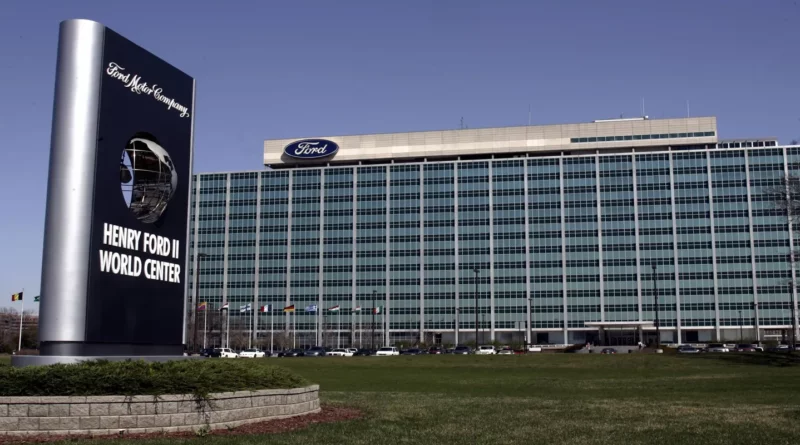History of Ford Motor Company in Detroit Michigan
The Ford Motor Company, headquartered in Detroit, Michigan, is one of the most storied and influential automotive companies in the world. Founded by Henry Ford in 1903, the company revolutionized the automobile industry with its innovative production techniques, most notably the assembly line. Over the decades, Ford has played a pivotal role in shaping the automotive landscape and has become synonymous with American industrial prowess.
Early Years and Foundation
Henry Ford, born in 1863 on a farm in Dearborn, Michigan, displayed a keen interest in machinery and mechanics from a young age. After working as an engineer for the Edison Illuminating Company, Ford began experimenting with gasoline engines and built his first experimental car, the Quadricycle, in 1896.
In 1903, with the help of twelve investors and a total investment of $28,000, Ford established the Ford Motor Company. The company’s first vehicle, the Model A, was introduced later that year. Despite early financial struggles, Ford’s relentless pursuit of innovation soon set the stage for transformative success.
The Model T and the Assembly Line
The introduction of the Model T in 1908 marked a turning point for the company and the automotive industry as a whole. The Model T was designed to be affordable, reliable, and easy to maintain, making car ownership accessible to the average American. Priced initially at $850, the cost of the Model T continued to decrease over the years due to production efficiencies.
In 1913, Ford revolutionized manufacturing with the introduction of the moving assembly line at its Highland Park plant. This innovation drastically reduced the time required to build a car from over 12 hours to just 93 minutes. The assembly line not only increased production but also allowed Ford to reduce costs and pass the savings on to customers. By 1927, Ford had produced over 15 million Model T cars, cementing its place in automotive history.
Labor Relations and the Five-Dollar Day
Ford’s introduction of the $5 workday in 1914 was another groundbreaking initiative. At a time when the average wage for factory workers was about $2.34 per day, Ford’s decision to double wages attracted a loyal and motivated workforce. This move not only improved worker productivity but also reduced employee turnover and helped create a burgeoning middle class capable of purchasing the products they manufactured.
Expansion and Diversification
In the 1920s and 1930s, Ford expanded its product line and global reach. The company introduced new models such as the Model A, which succeeded the Model T in 1927, and ventured into luxury cars with the acquisition of the Lincoln Motor Company in 1922. Internationally, Ford established production plants in Europe, South America, and Asia, becoming a global automotive powerhouse.
The Post-War Era and Technological Advancements
Following World War II, Ford continued to innovate and adapt to changing market conditions. The company introduced the F-Series trucks in 1948, which would become one of the best-selling vehicles in America. During the 1950s and 1960s, Ford released iconic models like the Thunderbird and the Mustang, the latter becoming an instant classic and a symbol of American muscle cars.
Ford also embraced new technologies and safety features, pioneering advancements such as seat belts, airbags, and antilock brakes. The company’s commitment to innovation extended to environmental sustainability, leading to the development of more fuel-efficient engines and electric vehicles.
Challenges and Restructuring
The late 20th and early 21st centuries presented significant challenges for Ford. Increased competition from foreign automakers, economic recessions, and fluctuating fuel prices pressured the company to rethink its strategies. In the early 2000s, Ford underwent major restructuring to improve efficiency and profitability.
Under the leadership of CEO Alan Mulally, appointed in 2006, Ford implemented the “One Ford” strategy, focusing on global integration and streamlined operations. This strategy helped Ford weather the 2008 financial crisis without resorting to government bailouts, unlike some of its competitors.
Recent Innovations and the Future
In recent years, Ford has continued to innovate and adapt to the evolving automotive landscape. The company has made significant investments in electric and autonomous vehicle technologies, aiming to lead the industry in sustainable mobility solutions. Models like the all-electric Mustang Mach-E and the F-150 Lightning demonstrate Ford’s commitment to a greener future.
Ford has also embraced connected car technology, integrating advanced infotainment systems and driver-assist features in its vehicles. The company’s vision for the future includes developing smart cities and expanding its mobility services to provide seamless transportation solutions.
Conclusion
The Ford Motor Company’s journey from a small startup in Detroit to a global automotive leader is a testament to its resilience, innovation, and impact on the industry. Henry Ford’s revolutionary ideas and commitment to making cars accessible to the masses changed the course of history. Today, Ford continues to build on its legacy, driving forward with new technologies and sustainable solutions to meet the needs of a changing world.
Discover more from City Towner
Subscribe to get the latest posts sent to your email.




